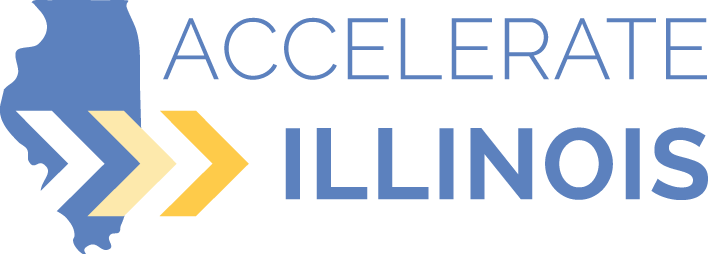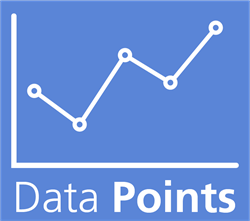Our roads don't pay for themselves

Hope Abrams (flickr)
The gas taxes and registration fees we collect aren't coming anywhere close to covering the cost of maintaining our roads.
I bet you’ve said this before: “Why are these roads so terrible and congested? Don’t I pay taxes for this?!”
The answer is yes, you do.
But those gas taxes and vehicle fees don’t generate nearly enough revenue to cover just the cost of maintaining roads, let alone building shiny new ones. An analysis of Chicago region roads and interstates shows just how little drivers pay compared to the cost of upkeep. The result: potholes, unsafe bridges, slow zones on transit and congestion.
And these estimates are conservative. They don’t include billions of dollars for the initial cost of construction or the $8,000 per mile to plow and salt in the winter or $113,000 per mile spent on police and safety. Further, these roads carry some of the highest amounts of traffic in the U.S. per mile, making them the top fiscal performers of all U.S. roads. Kevin DeGood and Andrew Schwartz of the Center for American Progress find that only 5 percent of the national roadway network are high performers, carrying 55 percent of all traffic. The remaining 94 percent generate even less revenue per mile than Chicago’s road network.
Subsidy comparison
No mode of transportation pays for itself. Pitting roads against transit, biking and walking benefits no one.
The U.S. Public Interest Research Group Education Fund and Frontier Group recently found that gas taxes and other fees paid by drivers, such as licenses and registration, “…cover less than half of road construction and maintenance costs nationally – down from more than 70 percent in the 1960s – with the balance coming chiefly from income, sales and property taxes and other levies on general taxpayers.” Compare that the Chicago Transit Authority, where fares and other system generated revenue account for about 60 percent of operating costs or Amtrak, an agency that now covers 85 percent of its operating budget with ticket sales and other revenues, reducing the federal operating need to just 15 percent.
So while it’s often said that roads pay for themselves, while transit, biking and walking are subsidized or getting a free ride, this data proves no mode of transportation pays for itself. Pitting one mode against another benefits no one.
Why we have potholes
Do you know you only pay $8.25 a month in state gas taxes for your vehicle? That’s probably less than you spent on lunch today. The federal and Illinois motor fuel taxes that fund transportation have been fixed at 18.4 and 19 cents per gallon, respectively, since the early 1990s. Taking into account inflation and that your car gets much better gas mileage today than it did 25 years ago, gas taxes are no longer sufficient to maintain our current transportation assets, much less fund expansion. Your $8.25 a month doesn’t go very far.
The result—as a nation we spend less and less on transportation infrastructure every year because tax revenues that power these investments have declined. The last state capital bill, Illinois Jobs Now was a six year bill that ended last year with no replacement. The Illinois Dept. of Transportation recently released its multi-year highway improvement program, the first under new Gov. Rauner. It’s not good news. Over the next five years the percent of roads in acceptable condition will decrease from 83 percent to only 62 percent and bridges from 93 percent to 86 percent. In fact, the state will spend $200 million less than last year’s plan and $1.1 billion less than the year before.
Don’t expect help from the feds. The federal Highway Trust Fund is bankrupt and has required $50 billion in general fund bailouts over the past five years because revenues from the federal motor fuel taxes simply can’t keep up with the need.
As a result, we can’t maintain the infrastructure we have or build new transportation projects that would relieve congestion and give people access to more jobs. And yes, it also means lots and lots of potholes.
But with our regional population growth stagnant compared to our peers, investments in infrastructure that attract economic development and make for a better quality of life are more important than ever.
The solutions
- Revenue needs. Why are the revenues that roads generate not enough to keep them well maintained? Well, the average person in Illinois only pays $8.25 a month in state gas taxes for the upkeep of our transportation network. Since 2012, 13 states have taken action to invest more in transportation. In 2015, 18 more states are considering action. If Illinois doesn't do something this year, not only will we continue to suffer potholed roads and delayed trains, but we will be less attractive to new businesses that might invest and create jobs in Illinois. The Metropolitan Planning Council’s Accelerate Illinois initiative, which is being conducted in association with AARP, Active Transportation Alliance, and Transportation for Illinois Coalition, the Chicago Metropolitan Agency for Planning and many others, is designed to address these issues that keep us from getting where we want to go by identifying new state funding for transportation.
- Tolling. If instead of paying motor fuel taxes, drivers paid a per-mile toll, revenues would almost cover the cost of maintaining areas highways and roads. The below graphic assumes tolls at the Illinois Tollway rates, six cents per mile for automobiles and 44 cents per mile for trucks. To offset regressivity for lower income households, lawmakers should increase the Earned Income Tax Credit at a relatively low cost.
However, current federal law does not permit introducing tolling on existing interstates. That might seem like a good thing, but tolling is not only a direct source of revenue for much-needed capital improvements, it also allows transportation agencies to better manage traffic and attract private investment. Both President Obama’s Grow America Act 2.0 and Ill. Senator Mark Kirk’s Lincoln Legacy Act would increase the flexibility of states and regions to toll their highways and implement congestion pricing. MPC supports both of these approaches.
- Invest based on a rigorous cost benefit analysis. While new revenue is certainly needed, we must spend every dollar smartly. In Illinois, transportation spending is not tied by law to statewide goals or performance measures, nor are agencies required to coordinate to achieve the highest return on an investment. MPC is a strong advocate for a statewide, data-based approach that prioritizes the most effective, accountable and transparent investments to reduce hours spent in traffic and curb emissions, connect affordable homes and jobs, spur economic development and improve safety. Gov. Rauner’s transition reportrecommends the state use a rigorous cost-benefit analysis to select projects with the potential to drive economic development and deliver multiple benefits for cities and communities. Also promising is that Ill. Dept. of Transportation Acting Secretary Randy Blankenhorn is the former executive director of the Chicago Metropolitan Agency for Planning. Under Blankenhorn's lead, that agency's approach to the Chicago region’s infrastructure through the GO TO 2040 plan included robust coordination and performance measures.
- Long term revenue solutions. As cars become more efficient and people drive less, the motor fuel tax will be even less effective. One option for a long-term sustainable revenue solution is a road user fee. Also known as a vehicle miles traveled tax, a road user fee can price usage at a cost equal to the damage a user inflicts on the road, plus the cost of modernizing to meet new demands. Motorists would pay the fee based on miles driven and the weight of their vehicle; ideally, incentives would be provided for electric vehicles. To alleviate privacy concerns, a private operator, like a cell phone company, could be contracted to store mileage data and maintain accounts and invoices. The University of Iowa conducted a two-year study with 2,000 participants driving 22 million miles. Only 20 percent of volunteers supported the tax at onset, but a strong majority were open to it by the study’s conclusion. To date, Oregon is the only state to institute a significant vehicle miles traveled program. A small pilot in 2006 and 2012 found privacy the main concern; as a result, the state created a GPS receiver that does not have the ability to track location. This year, a second pilot will begin with 5,000 volunteer motorists who will pay 1.5 cents/mile instead of Oregon’s current $0.30/mile gas tax. In Indiana, legislation is calling for a study to examine gas tax alternatives, including a road user fee. The Indiana Chamber of Commerce supports this legislation.
HB4166, recently passed by the Illinois General Assembly appropriates Road Fund dollars to study administration, development and implementation of a mileage-based user fee. MPC looks forward to working with the Illinois Dept. of Transportation on the study.
The next time you hit a pothole or see concrete falling from an overpass, remember it’s only going to get worse unless, like other states, our elected officials act. Illinois and Chicago have hundreds of transportation improvements planned but not fully funded, such as the Chicago Transit Authority Red and Purple Modernization that will mean faster commutes for hundreds of thousands of people every day; modernizing Interstate 290, one of the region’s most used highways; or simply coordinating signal timing on Cicero to reduce congestion. We need a long-term infrastructure investment strategy to grow the economy and get people out of traffic. For just the price of a cheeseburger, fries and a shake, we could ensure we get where we're going safely and on time. Join Accelerate Illinois today.

